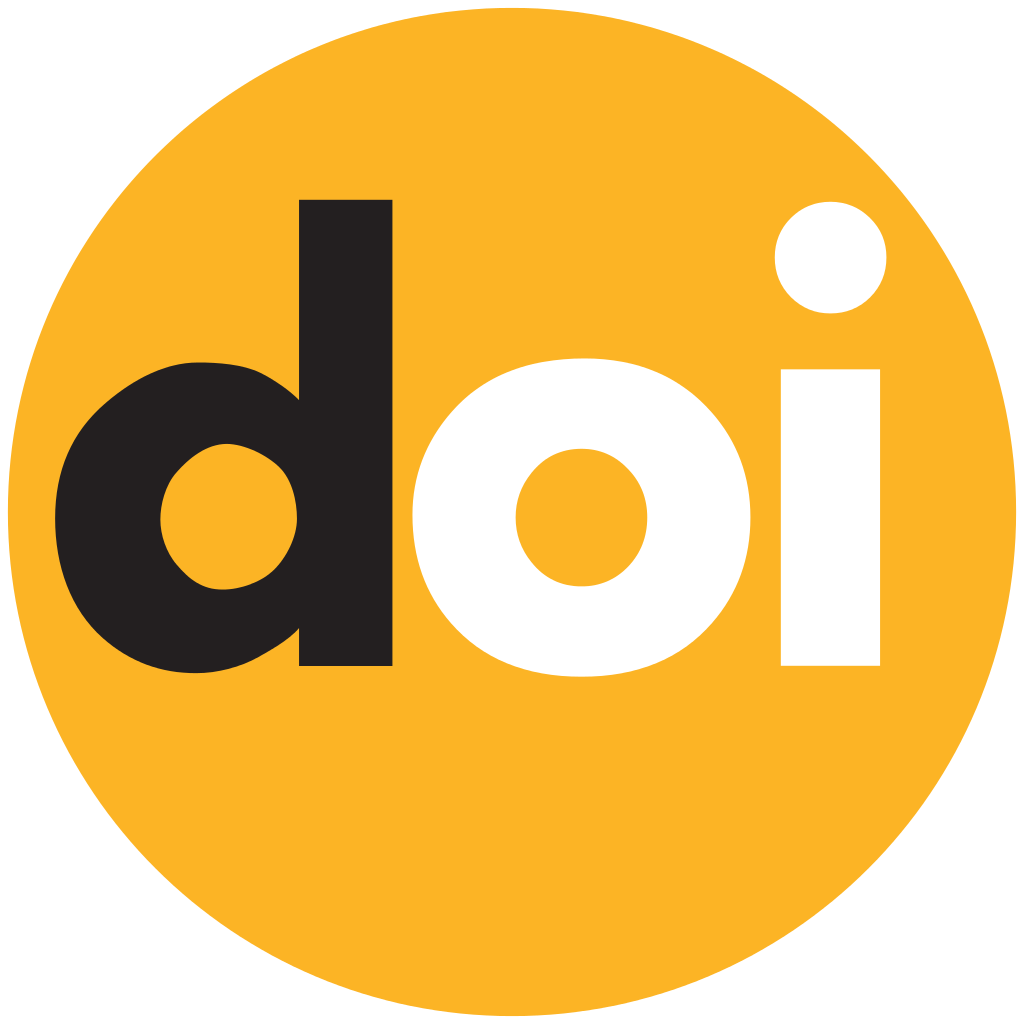Title:
Kebijakan Penanggulangan Kemiskinan di Era 4.0: Studi Konten Analisis New Media Pemerintah Kota Magelang
Author:
Abstract
Keywords
Full Text:
##Full Text##References
Annur, C. M. (2019, May 16). Survei APJII: Penetrasi Pengguna Internet di Indonesia Capai 64,8%. Retrieved October 27, 2019, from https://katadata.co.id/berita/2019/05/16/survei-apjii-penetrasi-pengguna-internet-di-indonesia-capai-648
Asamoah, K. (2019). E-governance in Africa's local goverments: Do district assemblies in Ghana optimize the use of websites and social media? The Electronic Journal of Infromation System in Developing Countries, 85(4), 1-13. https://doi.org/10.1002/isd2.12082
Atiko, G., Sudrajat, R. H., Nasionalita, K,. (2016). Analisis Strategi Promosi Pariwisata Melalui Media Sosial Oleh Kementerian Pariwisata Ri (Studi Deskriptif Pada Akun Instagram @Indtravel). Jurnal Sosioteknologi, 15(3), 378-389.
Bjorklund, F. (2016). E-government and moral citizenship: the case of Estonia. Citizenship Studies, 20(6-7), pp.914-931. Doi: abs/10.1080/13621025.2016.1213222
Bappenas. 2015. Teknologi Informasi dan Komunikasi: Strategi Peduli Kemiskinan. Jakarta: Bappenas.
Bappenas. 2019. Program Kesejahteraan Sosial. Jakarta: Bappenas.
Badan Pusat Statisik Kota Magelang. 2019. Kota Magelang Dalam Angka. Magelang: Badan Pusat Statistik Kota Magelang.
Badan Pusat Statistik Indonesia. 2019. Kemiskinan dan Ketimpangan. Indonesia: Badan Pusat Statistik Indonesia.
Carlo Bertot, J., Jaeger, P. T., & Grimes, J. M. (2012). Promoting transparency and accountability through ICTs, social media, and collaborative e-government. Transforming Government: People, Process and Policy, 6(1), 78-91. https://doi.org/10.1108/17506161211214831
Dwi Wahyunengseh, R., Hastarjo, S., Mulyaningsih, T., & G. Suharto. D. (2020). Digital Governance and Digital Divide: A Matrix of the Poor's Vulnerabilities. Policy & Governance Review, 4(2), 152-166. Doi: https://doi.org/10.30589/pgr.v4i2.296
Flor A. (2015) Constructing Theories of Change for Information Society Impact Research. In: Chib A., May J., Barrantes R. (eds) Impact of Information Society Research in the Global South, pp.45-62. Springer, Singapore. DOI:1 0.1 007/978-981-287-381-1_3. Retrieved from https://link.springer.com/chapter/10.1007/978-981-287-381-1_
Furqon A. M., Hermansyah, D., Sari, R., Sukma, A., Akbar,Y., Rakhmawati, A. N., (2018). Analisis Sosial Media Pemerintah Daerah Di Indonesia Berdasarkan Respons Warganet. Jurnal Sosioteknologi, 17(2), 177-188.
Gil-Garciaa, J.R., Dawesa, S.S., Pardoa, T.A. (2018). Digital government and public management research: finding the crossroads. Public Management Review, 20(5), 633-636. doi: 10.1080/14719037.2017.1327181
Indonesia Peringkat Kelima Dunia dalam Jumlah Pengguna Internet. (2019, September 11). Retrieved October 27, 2019, from https://databoks.katadata.co.id/datapublish/2019/09/11/indonesia-peringkat-kelima-dunia-dalam-jumlah-pengguna-internet
Johansson, K.M., and Raunio, T. (2019). Government communication in a comparative perspective in Johansson, K.M. & Nygren, G. (eds.) Close and distant: Political executive–media relations in four countries, pp. 127-148. Retrieved from https://www.researchgate.net
Kelleher, J. (2017) October 27, 2017, Implementation of e-Government to be accelerated in Indonesia. Opengovasia.com. Retrieved from: https://www.opengovasia.com/articles/6761-implementation-of-e-government-to-be-accelerated-in-indonesiaKemp, S. (2019) Januari 31, 2019, Digital 2019: Indonesia. Retrieved from https://datareportal.com/reports/digital-2019-indonesia
Khan, G. F. (2017). Social Media for Government. New York, United States: Springer Publishing.
Kozma, R. B., & Vota, W. S. (2014). ICT in developing countries: Policies, implementation, and impact. In J. M. Spector, M. D. Merrill, J. Elen, & M. J. Bishop (Eds.), Handbook of research on educational communications and technology (pp. 885-894). New York: Springer. retrieved from www.researchgate.net
Knox, C.C. (2016). Public Administrator's Use of Social Media Platforms: Overcoming the Legitimacy Dilemma?. Administration & Society, 48(4), 477-496.
Krippendorff, K. (2004). Content Analysis: An Introduction To Its Methodology.
Meijer, A.,Bolivar R.P.M., Gil-Garcia R. J,. (2018)From E-Government to Digital Era Governance and Beyond: Lessons from 15 Years of Research into Information and Communications Technology in the Public Sector.
Mickoleit, A. (2014). Social Media Use by Governments: A Policy Primer to Discuss Trends, Identify Policy Opportunities and Guide Decision Makers, OECD Working Papers on Public Governance, No. 26, OECD Publishing, Paris, https://doi.org/10.1787/5jxrcmghmk0s-en.
Osei-Kojo, A. (2017). E-goverment and public service quality in Ghana. Journal of Public Affairs, 17(3), e1620. https://doi.org/10.1002/pa.1620
Pemerintah Indonesia. 2003. Instruksi Presiden Nomor 3 Tahun 2003 tentang Kebijakan dan Strategi Nasional Pengembangan e-Government di Indonesia
Peraturan Menteri PAN Nomor 83 Tahun 2012 tentang Pedoman Pemanfaatan Media Sosial di Instansi Pemerintah
Perpres No. 15 Tahun 2010 tentang Percepatan Penanggulangan Kemiskinan dan membentuk Tim Nasional Percepatan Penanggulangan Kemiskinan atau (TNP2K).
Prabhakaran, A., & Kalyani, K. (2014). The thumb generation: ICT application in libraries. Journal of Library, Information and Communication Technology (JLICT), 6(1-2), 42-47. Retrieved from http://www.escienceworld.in/index.php/jlict/article/view/61/61
Ramadani, Thoriq. (2019). Implementasi Kebijakan Pengelolaan Komunikasi Publik di Kementerian Energi dan Sumber Daya Mineral. Jurnal Borneo Administrator, 15 (1), 1-18. https://doi.org/10.24258/jba.v15i1.369
Rauchfleisch, A. (2017). The public sphere as an essentially contested concept: A co-citation analysis of the last 20 years of public sphere research. Communication and the Public, 2(1), 3–18. doi:10.1177/2057047317691054
Spacek, D. (2018). Social Media Use in Public Administration: The Case of Facebook Use by Czech Regions. NISPAcee Journal of Public Administration and Policy, 11(2), 199–218. https://doi.org/10.2478/nispa-2018-0019
Schivinski, B., & Dabrowski, D. (2014). The effect of social media communication on consumer perceptions of brands. Journal of Marketing Communications, 22(2), 189-214. https://doi.org/10.1080/13527266.2013.871323
Wolfson, T., Crowell, J., Reyes, C., & Bach, A. (2017). Emancipatory broadband adoption: Toward a critical theory of digital inequality in the urban United States. Communication, Culture and Critique, 10, 441-459. Doi:10.1111/cccr.12166
DOI: https://doi.org/10.31002/jpalg.v4i2.3495
Article Metrics
Abstract view : 0 times##Full Text## - 0 times
Cited By
Refbacks
- There are currently no refbacks.
Copyright (c) 2020 Dedi Setiawan, Rutiana Dwi Wahyunengseh

This work is licensed under a Creative Commons Attribution-NonCommercial-ShareAlike 4.0 International License.
Journal of Public Administration and Local Governance
Public Administration Programme, Universitas Tidar
Jl.Kapten Suparman, No.39, Potrobangsan, Magelang Utara, Kota Magelang, Jawa Tengah, 56116
http://jurnal.untidar.ac.id/index.php/publicadmini
P-ISSN: 2614-4433
E-ISSN: 2614-4441





 Abstract views : 0
|
Abstract views : 0
| PDF views : 0
PDF views : 0